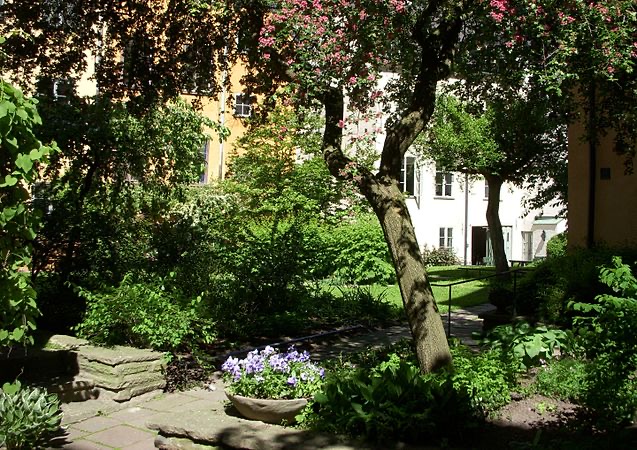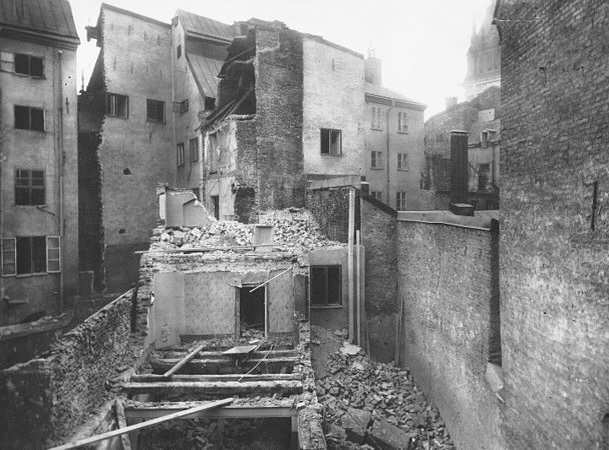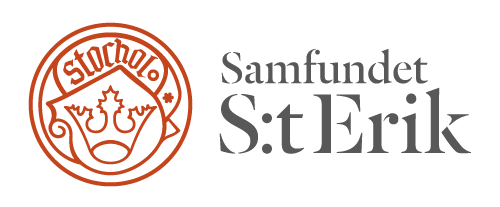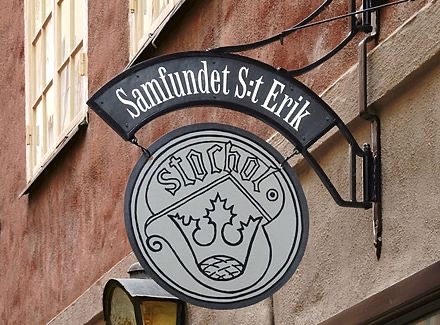Historic spots
-
Stortorget
Stortorget, the Great Square, is Stockholm’s oldest square, located in Gamla stan.
Our street Köpmangatan ends or starts here (depending on which direction you arrive from).Stortorget was from the beginning the central point around which the city grew. At Stortorget, from the 14th century until 1732, there was the city’s council house.
Stortorget was the site of Stockholm’s bloodbath in 1520, but it was also here that Sweden’s first pharmacy was opened by pharmacist Anthonius Busenius in 1575. In here you will today find the conceptual cocktail bar Pharmarium.

Stortorget’s Christmas market is arranged annually on Stortorget. Since 2001, the Nobel Museum has been located in the old Börshuset.
Read more: https://sv.m.wikipedia.org/wiki/Stortorget,_Stockholm
-
Kvarteret Cepheus
The Cepheus neighborhood is a triangular neighborhood in the Old Town district of Stockholm, located southeast of Stortorget. The neighborhood was cleaned up by Samfundet Sankt Erik in the years 1934–1970, when the farmhouses were demolished and the Old Town’s only major park was built. However, it is not currently available to the public



History
In the 1930s, distaste for the Old Town’s slums had been replaced by great respect for the district’s historical heritage. In 1934, Samfundet Sankt Erik had the house at Kindstugatan 14 in the Cepheus quarter renovated on a trial basis. The result was considered very successful. However, the property owners were completely uninterested, they would rather sell than pay for a major demolition and rebuild. Therefore, the company AB Stadsholmen was formed with the task of restoring and modernizing the buildings.
The community began to systematically purchase several buildings in the neighborhood with money that had been borrowed from the city. In the quarter, over 30 small buildings crowded around cramped backyards (some only 2–3m² in size) and an internal jumble of centuries-old additions. While other city blocks in the Old Town are criss-crossed by alleys and streets, kv Cepheus was a single large compact building volume with a courtyard shaft that sent some daylight to the apartments.


In 1936, an extensive clean-up project was started under the direction of the architect Albin Stark. Thirteen farm houses were demolished and in their place a continuous courtyard was built, where the Old Town’s first major park was created. Radical architects and young newlyweds moved into the modernized small apartments at the end of the 1930s. The ”honeymoon quarter” became for a time the name of Cepheus.
In the following years until 1970, the houses along the streets were equipped and modernized according to drawings by Albin Stark’s son, architect Erik Stark. All buildings were examined by the Stockholm City Museum, which found beams and other building details that surprised with their age and their cultural-historical value.
A commemorative plaque with the text Samfundet S:t Erik had restored kv. Cepheus 1934-1970 reminds of the clean-up.Reference: https://sv.m.wikipedia.org/wiki/Kvarteret_Cepheus#Saneringen_av_kv_Cepheus
-
Samfundet S:t Erik

Samfundet S:t Erik är en ideell förening från 1901 som arbetar för att öka kännedom om Stockholms historia samt att väcka intresse för Stockholms arkitektur och stadsutveckling och tillvaratagandet av natur- och kulturhistoriska värden vid stadens tillväxt.
Föreningen arbetar bland annat med att sätta upp blå kulturhusskyltar i Stockholm på kulturhistoriskt intressanta byggnader, delar ut anslag och stipendier till projekt som relaterar till Stockholm, samt anordnar visningar, vandringar, seminarier, utflykter och föreläsningar.
1934 köpte Samfundet S:t Erik en rivningshotad fastighet i kvarteret Cepheus på Köpmangatan och gjorde en provsanering. Därefter inköptes fler fastigheter och så småningom hade hela kvarteret Cepheus rustats upp och räddats från rivning. Två av tidens främsta landskapsarkitekter anlitades och gav kvarteret en stor, grön innergård. Samfundet äger inte längre byggnaderna, men kansliet ligger fortfarande kvar på Köpmangatan 5.

K. 5
-
Järnpojken
Skulpturen är 15 centimeter hög och känd som ”Sveriges minsta offentliga monument”.
Järnpojken, även kallad ”Pojke som tittar på månen”, är en skulptur av konstnären Liss Eriksson.
Skulpturen restes 1967. Det händer att förbipasserande erbjuder pengar till pojken och klappar honom på huvudet för tur.

Skulpturen finns på Bollhustäppan, på bakgården till Finska kyrkan
-
Saint Göran and the dragon
Saint Goran and the dragon is a medieval wooden sculpture in the Great Church that represents the legend of Saint Goran and the dragon.
During the 1910s, a replica of the sculpture was cast in bronze and placed in the former Acteon quarter between Köpmantorget and Österlånggatan in the Old Town of Stockholm. It was inaugurated with pomp and circumstance on October 10, 1912.

The project was carried out through funding from the Association for Stockholm’s decoration with art and the manufacturer Hjalmar Wicander. The wooden sculpture was copied under Theodor Lundberg’s supervision in clay and then cast in plaster, after which it was transferred to bronze by Otto Meyer’s art foundry. The plinth was designed by the court curator Gustaf Lindgren.The sculpture on Köpmantorget’s plinth towards the east reaches all the way down to Österlånggatan at the height of Brunnsgränd.

Saint Goran and the dragon from the west.
There is a fountain sculpture that forms part of the sculpture. It is designed as a well with three medieval city gates through which water flows into the fountain basin. They symbolize the three streams that first surrounded Gamla Stan (now Norrström, Stallkanalen and Söderström).
The fountain should also remind of the public well that was located at the then Fiskartorget in the middle of the 15th century.


Copy of the church building relief executed in bronze. Reference: Wikipedia
![Köpmangatan [Gamla stan]](https://kopmangatan.com/wp-content/uploads/2023/10/Capture-K.-LOGO-1-2.jpg)